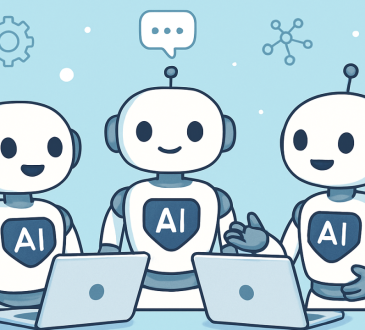Claude Code Gets a Web Version — But It’s the New Sandboxing That Really Matters

Sandboxing lessens hassle, but fire-and-forget agentic tools still pose risks
.
In the fast-moving world of artificial intelligence, Anthropic has just made another bold move — launching the web version of Claude Code, its specialized AI coding assistant. For developers and tech enthusiasts, this is a major milestone: Claude’s powerful reasoning and programming abilities are now available directly in the browser, no installation or API needed.
But while the convenience of the new web app is impressive, experts say the real breakthrough lies deeper — in Claude Code’s new sandboxing system, which could reshape how AI agents execute and manage code safely.
The Rise of Claude Code
Claude Code was originally designed to assist programmers with everyday coding tasks — from debugging and refactoring to writing complete software modules. Similar to GitHub Copilot or ChatGPT’s Code Interpreter, it could explain errors, run snippets, and even simulate runtime environments.
Until now, however, it required local setup or API access, which made it less accessible to beginners or casual users.
The new browser-based Claude Code changes everything. Users can open a tab, type commands, debug scripts, or explore algorithms instantly. Its interface is clean, fast, and feels less like a chatbot — more like collaborating with an intuitive pair programmer who can understand your intent.
Anthropic’s goal is simple: make AI-assisted coding accessible to everyone. In today’s development world, where speed and efficiency are key, frictionless access can be a game-changer. But that convenience raises a crucial question — how can AI safely run code without overstepping boundaries?
Why Sandboxing Matters
That’s where the new sandboxing feature comes in. Instead of running code on shared servers or local systems, Claude Code executes everything in a secure, isolated environment — a sandbox — that controls exactly what the AI can do.
Sandboxing isn’t new in computing, but it’s becoming essential for AI tools that can execute commands. When models run code autonomously, they can accidentally access sensitive data, misuse APIs, or create vulnerabilities.
Claude Code’s sandbox prevents this. Every session runs inside a temporary, internet-free environment that resets after completion — a digital clean slate.
Developers testing the feature say it’s not just safer but smoother. There’s no need to install runtimes or worry about dependencies — the AI handles it all seamlessly in the background.
The “Fire-and-Forget” Challenge
Even with sandboxing, there’s growing concern around “fire-and-forget” AI tools — systems that execute multi-step tasks autonomously, sometimes without ongoing human oversight.
Imagine asking an agentic Claude Code to “build and deploy a restaurant booking app”. It could, in theory, generate, test, and deploy code automatically. But this level of autonomy introduces new risks — errors, misuse, or unintended consequences.
The issue isn’t just technical — it’s about control and accountability. How much freedom should AI systems really have?
Anthropic takes a balanced approach. While Claude Code can perform advanced operations, it still requires explicit user approval before executing each step. This design ensures humans remain in charge, keeping decision-making transparent and intentional.
A Safer Path Toward Smarter AI
Claude Code’s sandboxing reflects a broader philosophy known as containment-first AI engineering — emphasizing safety and oversight before full automation.
Beyond sandboxing, Anthropic uses context limits (to control how much information the AI can process at once) and Constitutional AI principles (to ensure ethical, rule-based behavior). Together, these safeguards make Claude Code not just a tool but a model for responsible agentic AI development.
This approach could shape the next generation of coding assistants, influencing how future AI systems balance autonomy with safety.
Developer Reactions and Industry Impact
Developers are welcoming the update with enthusiasm. Many appreciate how sandboxing removes the fear of breaking their systems during testing.
As one developer put it:
“It’s like giving the AI its own playpen — it can experiment safely without knocking anything over.”
Industry experts believe sandboxing could soon become a standard safety feature for all agentic AI tools. As these systems gain power to execute code or make real-world changes, containment layers will be crucial for user trust and control.
Still, experts caution that sandboxing isn’t a complete fix. AI outputs can still contain logical flaws or hidden biases. Human review remains essential — the sandbox protects the system, not the judgment.
Or as one AI ethicist noted:
“Sandboxing is like putting training wheels on a self-driving car — it keeps things safer, but you still need a driver.”
The Road Ahead
Claude Code’s web version is more than a product update — it’s a sign of how the AI industry is evolving toward secure, human-centered design.
Its sandboxing system might sound technical, but it represents a larger shift in how we approach AI autonomy, trust, and responsibility.
As AI tools gain more freedom to act on their own, the question remains: How much independence is too much?
Sandboxing offers a solid answer for now — ensuring that innovation continues without compromising safety. In the future, every AI coding assistant — from GitHub Copilot to GPT-powered interpreters — may follow this model.
Because when it comes to AI agents, the goal isn’t just to make them powerful. It’s to make them safe, predictable, and ultimately — trustworthy.




